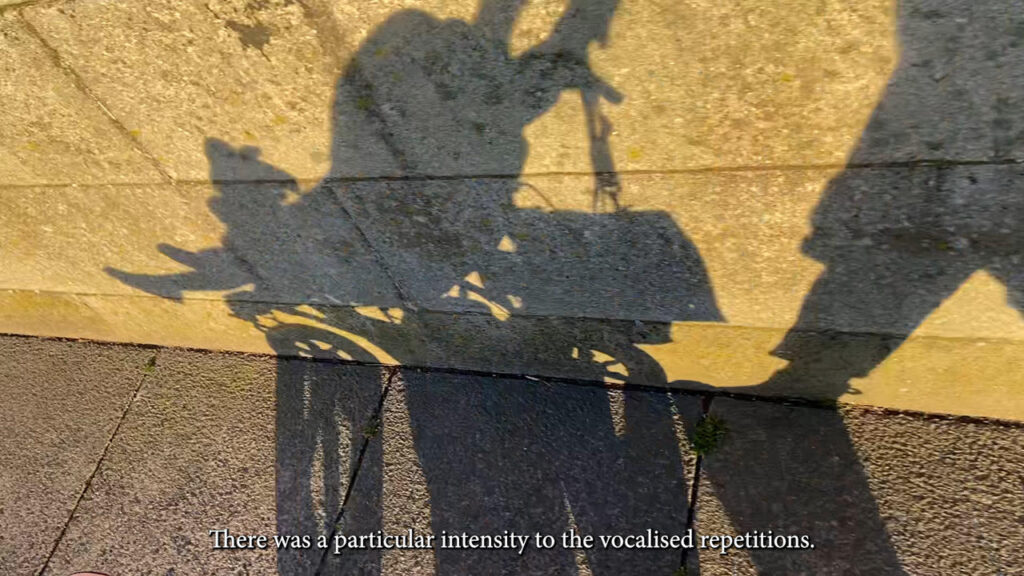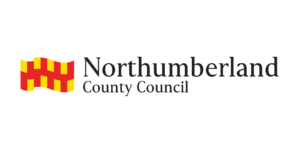Video and performance artist
Kathryn Elkin at The Maltings
On Saturday 2 November, Northern Irish artist Kathryn Elkin will present Thick Presence: All at Once – The Body in the Voiceover Booth at The Maltings.
This work has been supported by Create Berwick’s Creative Action Fund.
Thick Presence: All at Once – The Body in the Voiceover Booth is a work-in-progress event informed by research into the voiceover practices of the Broadcasting Ban (1988–1994) when the British government banned the voices of representatives of Sinn Féin and other republican and loyalist groups on television and radio in the UK.
During the event, Kathryn will discuss her creative practice and introduce this new body of research. Attendees will also be invited to make a recording that samples their voices to inform future work.
In this article, Kathryn reflects on the broadcasting ban, its formative impact on her artistry, and how it continues to influence her current exploration of voice and place.
“I grew up watching those news broadcasts, and they sometimes come up in conversation when talking about where I’m from. I’m often surprised by how little people from Britain are aware of our history.”
Kathryn Elkin, video and performance artist

When I was in art school, a tutor once asked if I wanted to create work about Northern Ireland, and I was aghast! Only in the last five years did I begin to understand how formative the broadcasting ban was in shaping my methodology as an artist—specifically in my use of transcription and voice. As a child, I was completely fascinated with those broadcasts and what they meant about who I was and where I was from.
There are already some fantastic video works retelling the history of the broadcasting ban around at the moment. In this event at The Maltings, I will present research and invite people into that more conversational space. It’s very different from showing finished work and the ambitions I would have within a more resolved presentation.
I am trying to test my contemporary relationship to voice, accent, and place. The potential for types of ‘liveness’ in moving image practice is an abiding concern, and there is something very alive in those microseconds just before the overdubbed voice crashes over the original. I’m trying to make the violence of that collision a material of sorts.
It’s here that I’m thinking about access and erasure. About the feeling that you are a conduit for something other than ‘you’. How it might be to understand yourself as a proxy of some sort. I’m always thinking of the antagonism between people or between materials.
Testing Boundaries and New Approaches
My process for this work has involved making a sort of ‘maquette’—a rough video that acts as a sketchbook to test new techniques. It’s a departure from how I’ve worked before. I have resisted the previous logics I have used to bring something together, as this reference of the broadcasting ban asks so many rich questions about omission and access. I want to find ways to speak to that formally.

There was a period where sound was removed and subtitles were used before voice overdubbing was allowed. There is a temporal shift that happens when an audience finds themselves closer to the time of the overdubbed voice than the footage.
Another common experience was attempting lip reading to test the veracity of the overdubbed speech or the text on the screen.
I’m describing this from a hearing perspective. I’m doing a consultation soon with Collective Text, who provides captioning and audio descriptions for artists’ films and videos. I’m trying to learn and think through access tools as I make this work, and this is becoming an increasingly crucial part of my method.
I’m embracing a hybrid approach for my upcoming event at The Maltings. I’ll share a bit of context to my work, talk about the research, and show some of that research. Then, I want to run some lines with the audience. With my work Queen, I staged a performance night in Newcastle as a live shoot and later filmed a group of friends bowling. I can’t resist using the opportunity of having a captive audience at this stage of playing and testing.
Let’s see if anyone makes the Final Cut!
The Future
As the next step in this research, I’m about to start a collaboration with musician Richy Carey. Richy is an incredible thinker and has a profound sensitivity to voice and sound. I’ve always envisioned him as a key collaborator in this process. We’ve been talking a lot about audio feedback as a method.
I’m going to start finding means to fund the next stages of production too. I want a Producer, an Editor and a Director of Photography. I don’t believe in scaling up production for the sake of it and loathe many ideas about ‘professionalism’ in practice. There are lots of video artists I really admire who do things on a shoestring. That said, working with other people is a huge privilege for me, and I need those professional structures and skill sets at this juncture. I can’t make the work I need to make out of my box room using my ailing computer! I’m excited to see what comes next.
Kathryn Elkin presents this participatory work-in-progress and film screening event at The Maltings, Berwick at 4:30pm on Saturday 2 November 2024, tickets can be reserved on The Maltings website.
Lorem ipsum dolor sit amet, consectetur adipiscing elit. Ut elit tellus, luctus nec ullamcorper mattis, pulvinar dapibus leo.


